PROVINCETOWN — An early and persistent fear about the pandemic was that small businesses in town would tumble, and Commercial Street would end up lined with shuttered storefronts. Another worry was that small-business failures might lead to big-business incursions, with beloved local shops replaced by Banana Republics or worse.
But with spring arriving, it’s become evident that Commercial Street is as healthy as ever. Some stores have moved to new locations, and the vacancy rate seems modest. The Independent counted seven available retail spaces on a recent walk down Commercial — at the former locations of Bravo, House of La Rue, Adams Pharmacy, Jelessi, Body Body, BXclusive, and Wampum etc. La Rue and BXclusive relocated, and the owner of Body Body got a new store named Steele. There’s been some churn and retirements, but, by and large, the retail corridor has survived.
Two new entrants to the scene found few available properties to consider. One, Scents of Adventure, moved into the former Salt Supply store. The other, Pillow Top, got a space in Whaler’s Wharf. Both businesses began as Covid sanity projects — creative outlets for cooped-up people.
Uncommon Scents
Chris Swank and Adam Shane are the co-owners of Scents of Adventure, which sells handmade candles with custom scent profiles. “I’ve opened up a business before — day spas down in Florida,” says Swank. “My parents own them now. This is our first foray into retail. We both have full-time jobs that are completely different from this. I’m a fifth-grade teacher for Boston Public Schools!”
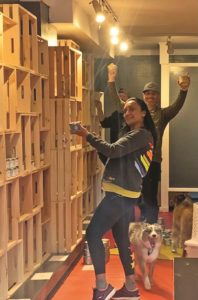
Shane works in trade shows and events, and when Covid hit, both men were suddenly working from home. “Last March, Adam stood up from the couch and said, ‘I’m ordering a candle-making kit from Amazon!’ ” Swank recalls. “I said, ‘You go right ahead.’ ”
The business began online. “We do a lot of partnership candles, working with nonprofits that might be running a campaign,” says Swank. “For the Alzheimer’s Association of Massachusetts/New Hampshire, we made ‘A Scent to Remember.’ For Camp Nellie Huckins, a girls’ camp in New Hampshire that was closed because of Covid, we made ‘Up High in the Mountains.’ We donate 20 percent back for every candle sold in a campaign.”
Why expand to brick and mortar? “We were sure we wouldn’t be doing any traveling, so we decided to give it a shot,” Shane says. “When we started looking in February, there really wasn’t much available. It was actually a competitive bid to get this place — there were other offers.”
Our Pillow
Michael DeMartino and Brian Orter, the new owners of Pillow Top, were actually looking for studio space for DeMartino’s Covid projects when they found the ground-floor retail space in Whaler’s Wharf they’re now working in. They had looked at stores that were larger and more expensive than they needed before finding their niche.
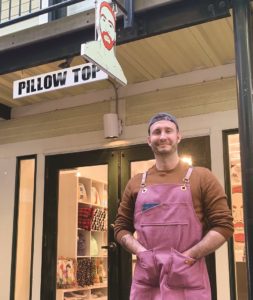
“What might be driving the cost is that residential property has gone up in price so dramatically,” says Orter. “There are so many residential units with ground-floor retail, and when the price of the whole place goes up, that means property tax goes up, and the mortgage goes up.”
Pillow Top would not have existed but for Covid. “Michael converted our garage into a workshop — 3D printers, a digital lab, sewing machines, a recording studio, all this stuff,” Orter says. “First, he made a coat for his mom, but you can kind of do anything with a pillow. I mean, he made a pillow that’s a gumball machine; he made one out of glass. There’s the studded harness pillow.
“When would we have an opportunity like this to try something and just see where it goes?” Orter adds. “Pillow Top could be a one-year thing that didn’t work, or it could turn into a warehouse full of drag queens making things and shipping them all over. Who knows?”
Breaking the Chain
Provincetown has had a bylaw since 2010 that theoretically keeps “formula retail” such as Banana Republic from opening here. Yet many believe the law would fail, like Wellfleet’s did, if taken to court, which is why the town settled with CVS. The Independent asked the chair of the local comprehensive plan committee, Ginny Binder, about efforts to write a bylaw that could withstand a legal challege.
“I think it’s critical that we maintain an atmosphere that welcomes small businesses,” said Binder. “I also think it’s doable. I’ve been to so many places where the coolest stores end up becoming a Duane Reade or a Gap. The property owners are delighted they’re getting $150,000 a year, but who comes to Provincetown to go to a Crate & Barrel?”
Binder said her committee, which is tasked with the rewrite of the local comprehensive plan, will be proposing a number of bylaw updates and referring them to town boards. “My hope is to run a bunch of stakeholder-engagement public sessions” over the summer, she said, “so that those bylaws would be ready for a fall town meeting.”
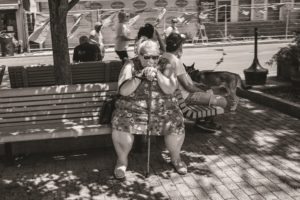
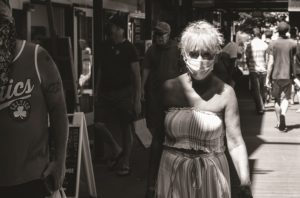
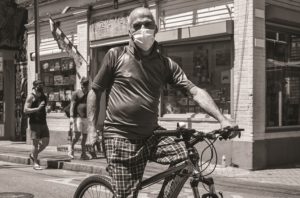


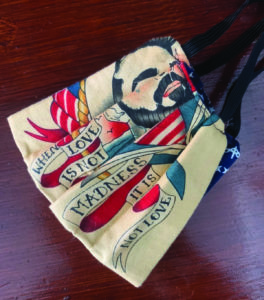 At the May 26 meeting, several speakers expressed concern that the mandatory mask zone would be abandoned. Some asked for it to stay in place, while others asked for it to be extended to Bradford Street, Shank Painter Road, or the entire town. Select board member Bobby Anthony tried to offer a motion to extend the zone to include the entire length of Commercial Street, but after some discussion, the decision was moved to May 28.
At the May 26 meeting, several speakers expressed concern that the mandatory mask zone would be abandoned. Some asked for it to stay in place, while others asked for it to be extended to Bradford Street, Shank Painter Road, or the entire town. Select board member Bobby Anthony tried to offer a motion to extend the zone to include the entire length of Commercial Street, but after some discussion, the decision was moved to May 28.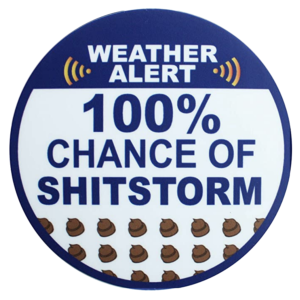 “There’s been a lot of chatter on social media over this 24/7 everywhere thing, and about where it came from,” said King. “We really appreciate counsel Giorgio bringing this forward: he wrote it without checking with anyone. It’s important for all the residents and business owners in Provincetown to know that. None of us were pushing for this everywhere, on the salt flats, in your backyard thing.”
“There’s been a lot of chatter on social media over this 24/7 everywhere thing, and about where it came from,” said King. “We really appreciate counsel Giorgio bringing this forward: he wrote it without checking with anyone. It’s important for all the residents and business owners in Provincetown to know that. None of us were pushing for this everywhere, on the salt flats, in your backyard thing.”
